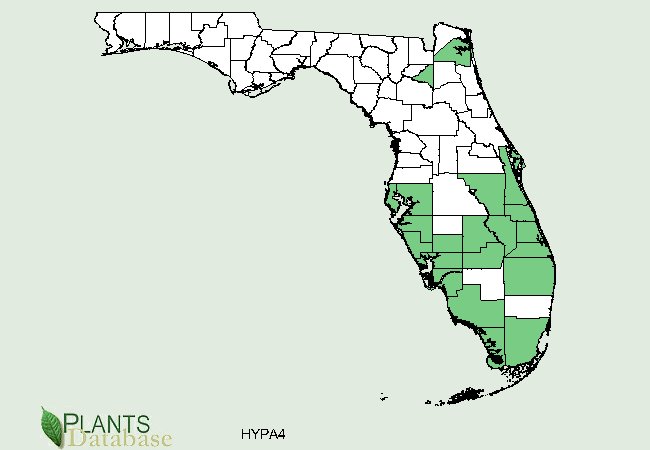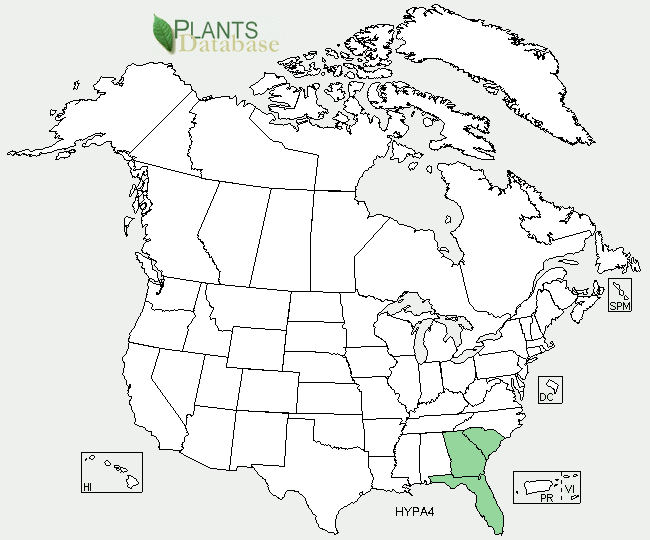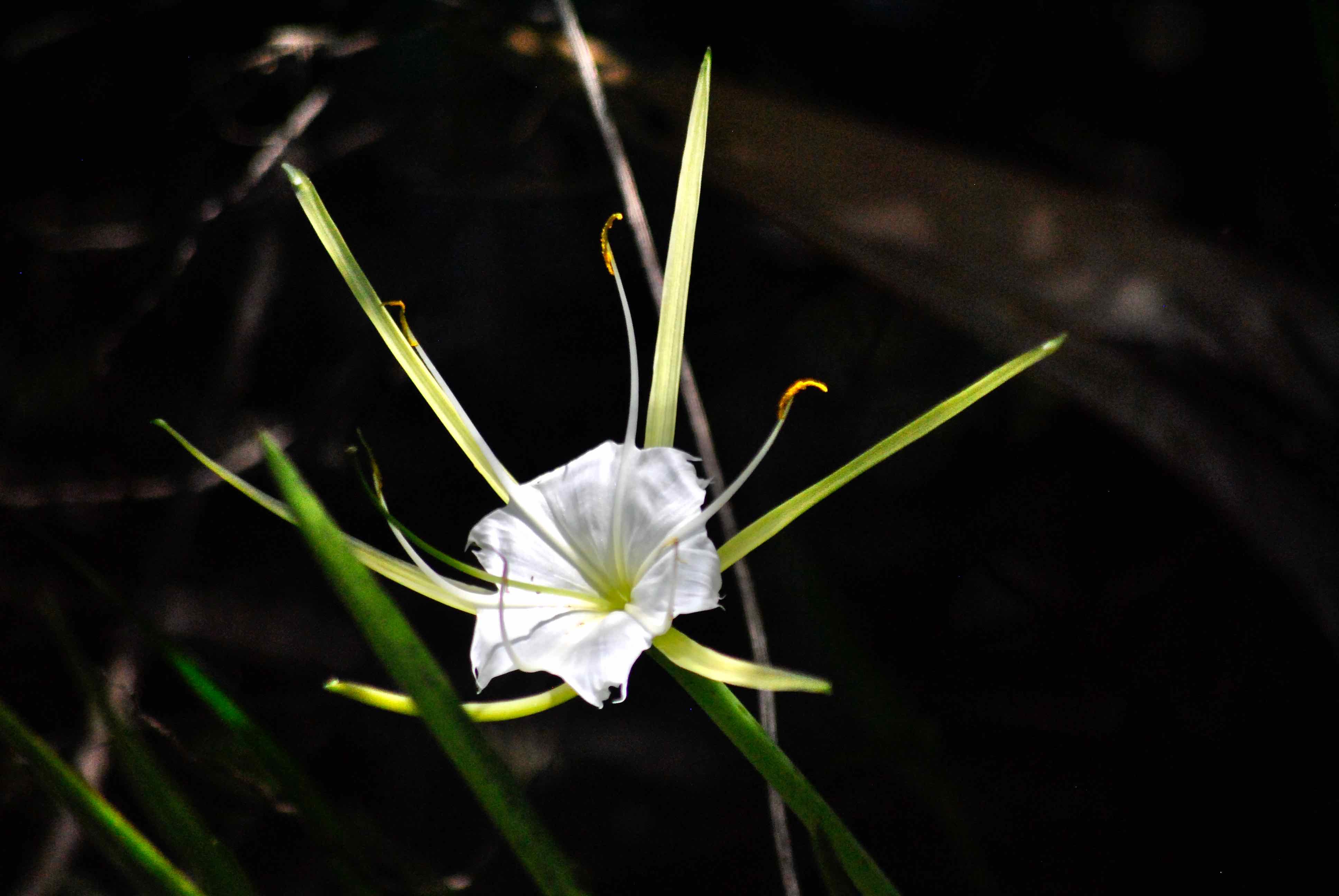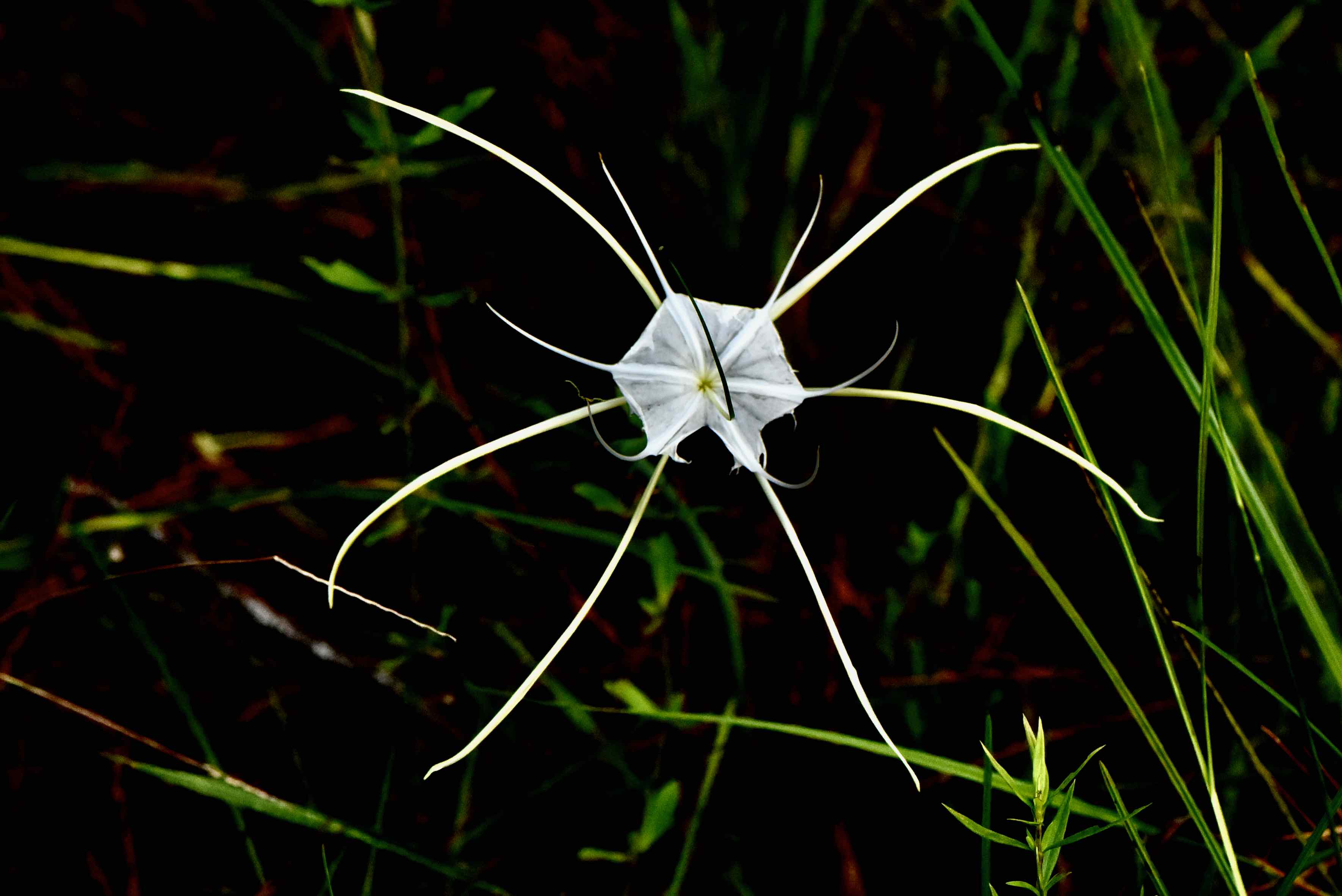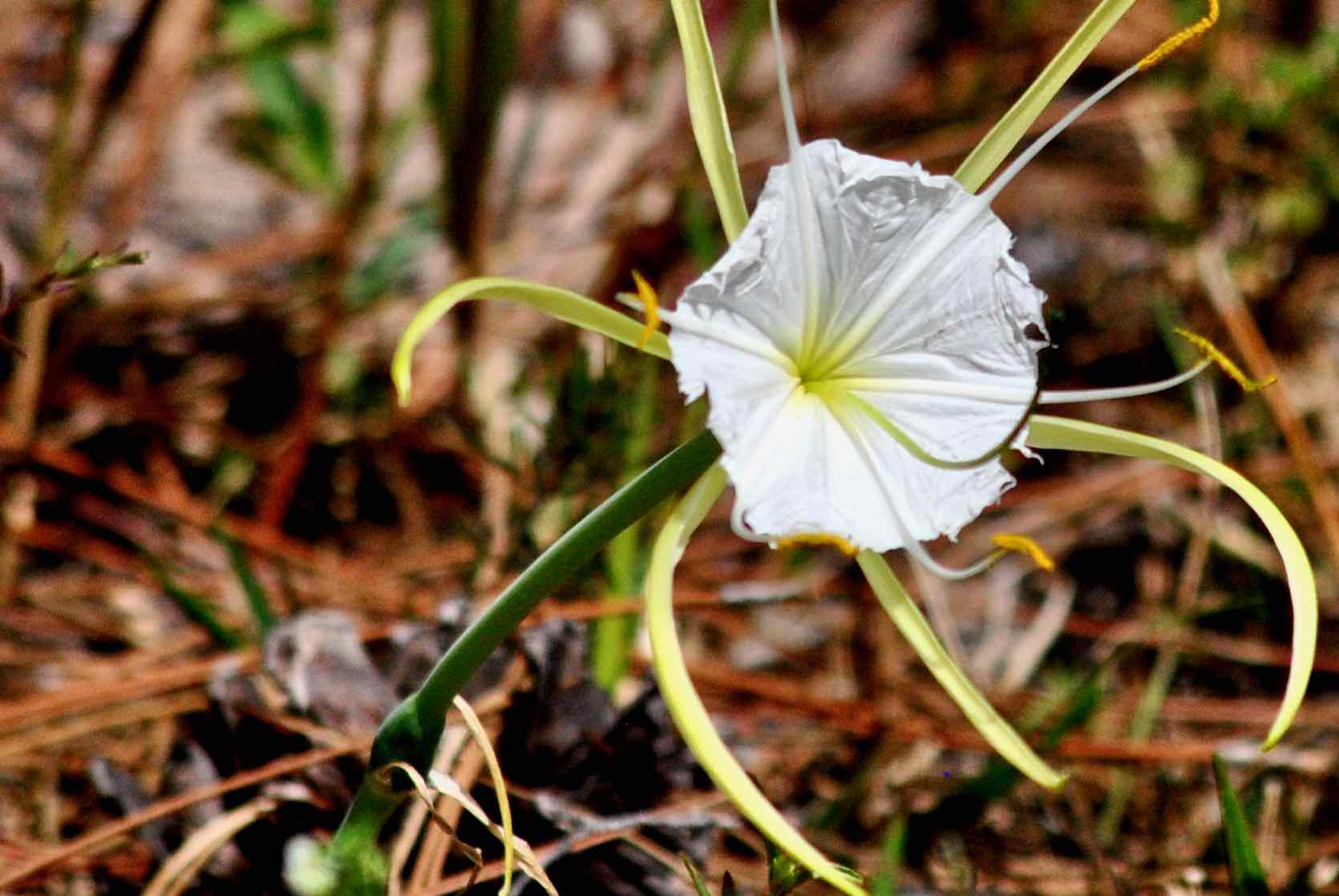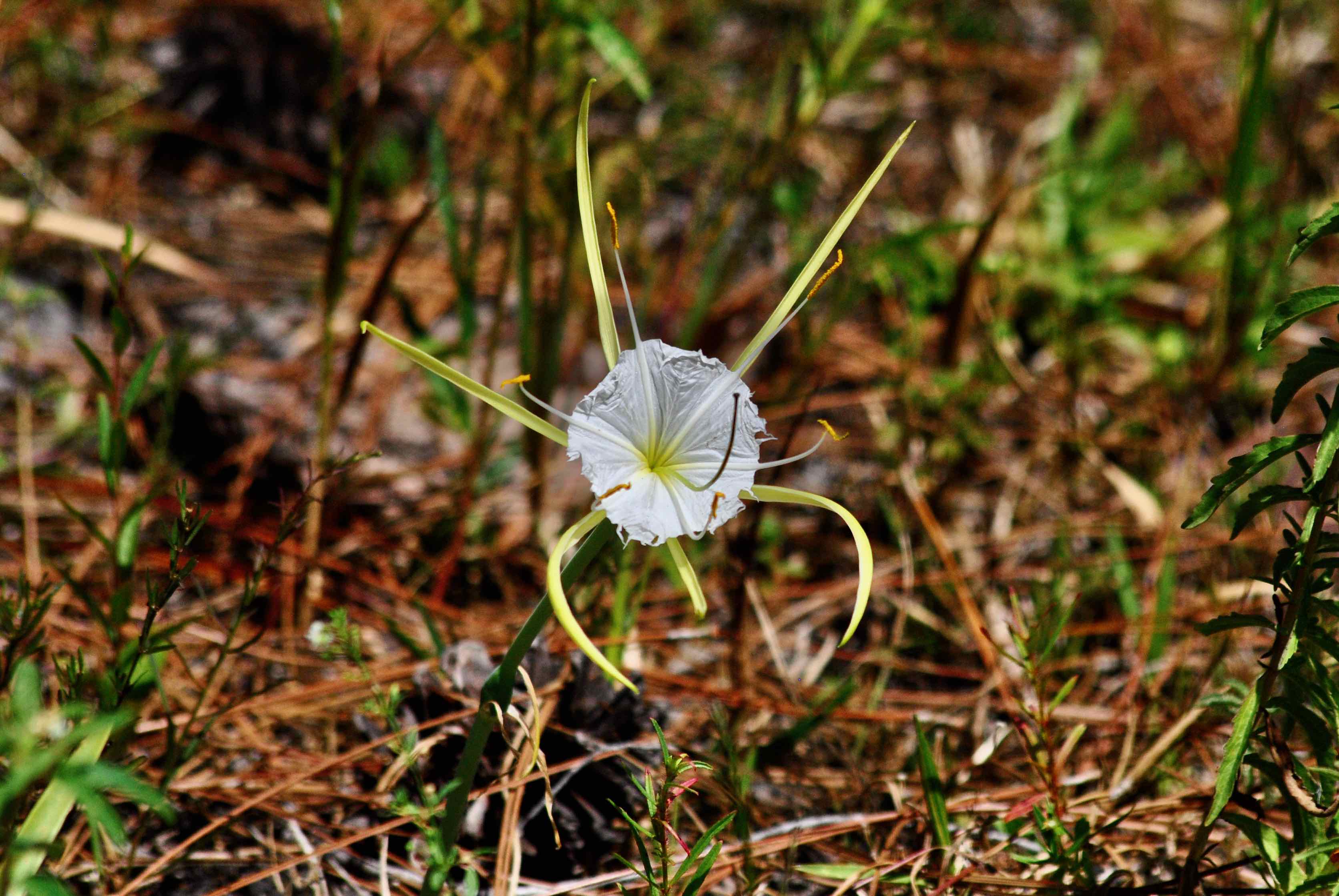
Alligator lily, photographed at Royal Palm Beach Pines Natural Area, Royal Palm Beach, Palm Beach County, in June 2015.
Alligator lily, Hymenocallis palmeri, is a marsh plant that might be as strange as it is beautiful. And undeniably beautiful it is.
Member of the of the genus Hymenocallis are commonly called spider lilies. Hymenocallis means beautiful membrane in Greek, and refers to the large, white funnel-shaped part of the flower called a staminal cup. It's the most obvious characteristic common to all spider lilies. See it and you know instantly that you're looking at a spider lily, although determining exactly which spider lily species is a little more complicated.
Spider lilies are sometimes confused with the swamp lily, which has a similar appearance and grows in similar habitats. However, swamp lilies lack the tell-tale staminal cup.
There are 40-some members of Hymenocallis growing in the New World, of which 16 are native to the United States. Of those, 13 are native to Florida; four of them are found in South Florida. Our guy, the alligator lily, is problably the most common, most widespread of them.
Like all members of Hymenocallis, alligator lily arises from a small, onion-like bulb. The leaves are strap-like, long and narrow, and emerge from the bulb in two ranks. Also from the bulb comes a long flower stalk, technically called a scape. The flower is large and showy, white with a greenish yellow center. There are six long, greenish-yellow tepals — parts of the flower that aren't quite petals and not quite sepals, or the outer part of the flower — that extend beyond the staminal cup and six prominent stamen that remind us of the filament in an old-fashioned incandescent light bulb.
By comparison with its cousins, the leaves of alligator lily are short and narrow, perhaps about 15 inches long. The leaves are the shortest of any of the spider lilies native to Florida.
One key identifying feature: alligator lily has only one flower emerging from the scape. Florida spider lily has a similar appearance, but the scape will have two blooms and the tepals are white compared to the greenish white of our guy. Bloom time is spring to fall.
Here's where it gets a bit strange. On most plants, seeds are dispersed by wind, water, by animal or simply drop from the parent onto the ground. They come with a hard outer shell and are packed with nutrients to feed the sprout as it germinates and develops into a fully functioning plant. With alligator lily, the seeds develop in a pod at the top of the scape. As they mature, the weight of the seeds causes the scape to become top-heavy and tumble over. The mature seeds are green and able to perform photosynthesis and essentially feed themselves almost like miniature versions of the adult.
Alligator lily's range in Florida extends through most of the southern half of the Peninsula, roughly from Volusia County through Monroe, including the Keys. It's also found in the northeastern corner of the state, including Nassau and Duval counties. Older U.S. Department of Agriculture range maps include Miami-Dade as within alligator lily's range; the latest does not. Both Georgia and South Carolina are included in the old maps but are excluded from the new.
Alligator lily is a member of a member of Amarylilidaceae, the lily family, which also includes tulips, onions and asparagus. It's also spelled alligatorlily and alligator-lily.
Royal Palm Beach Pines Natural Area
Click on photo for larger image
U.S. Department of Agriculture Distribution Maps
